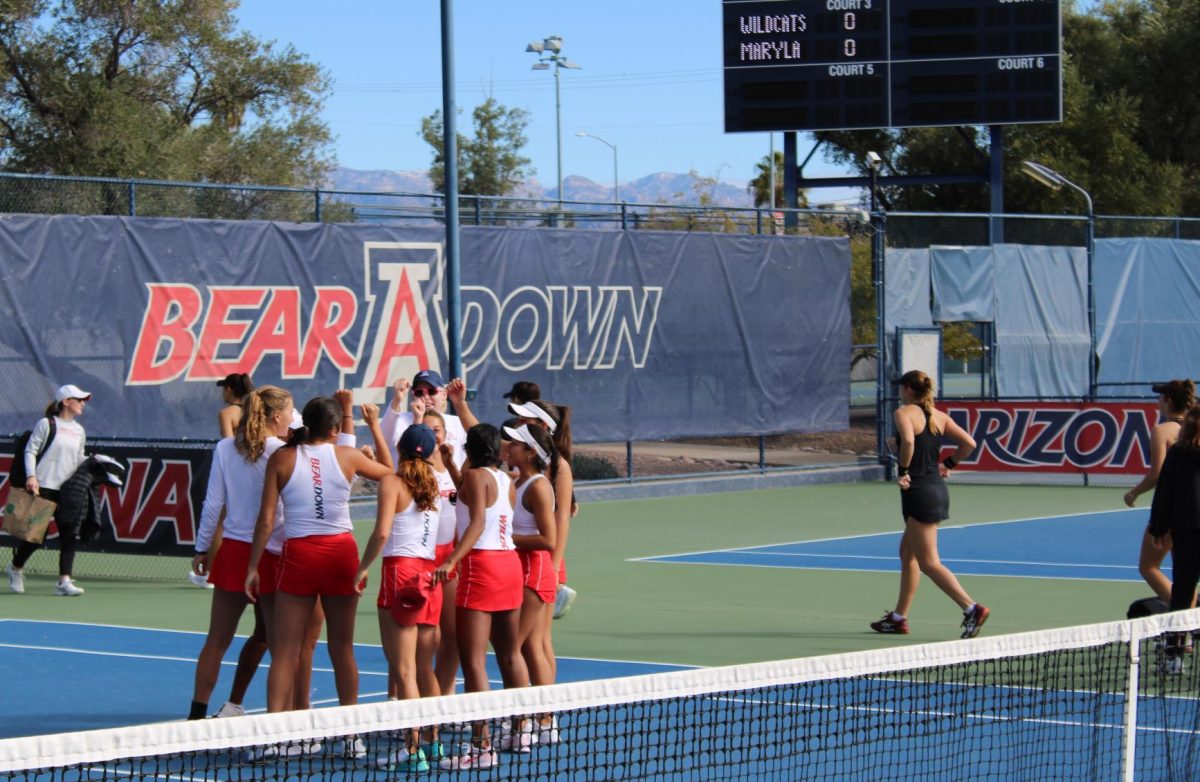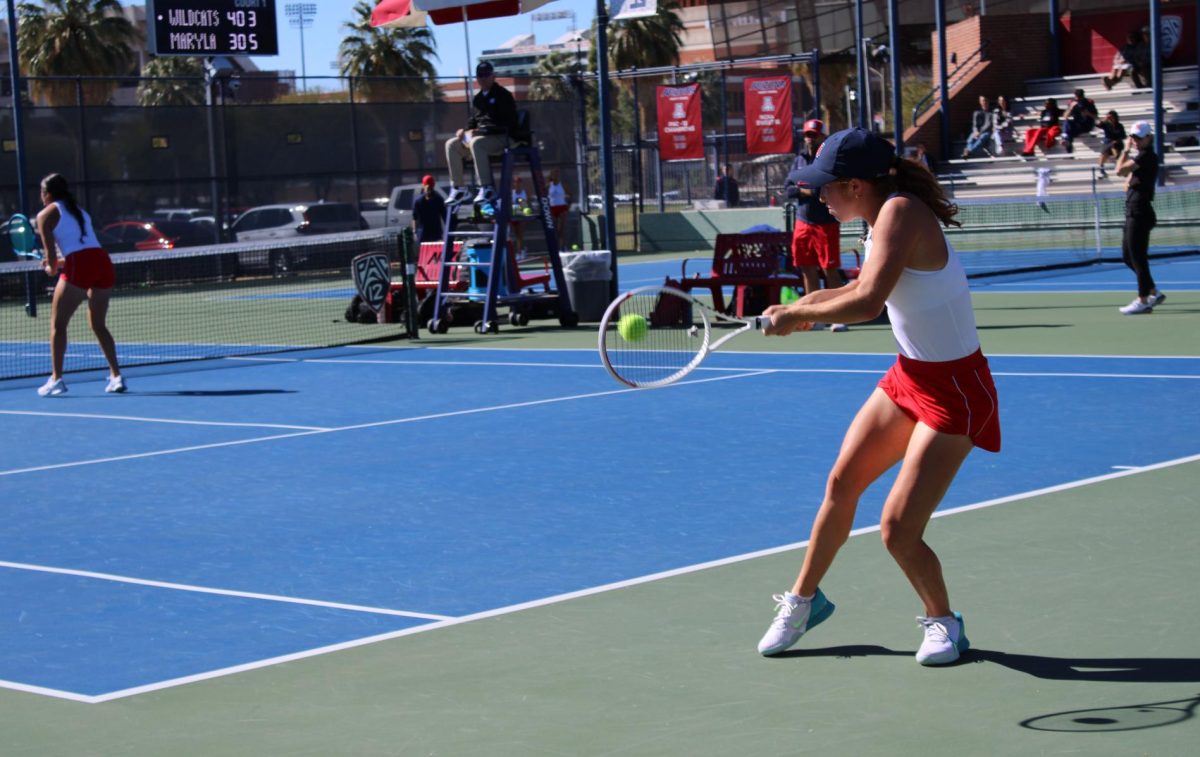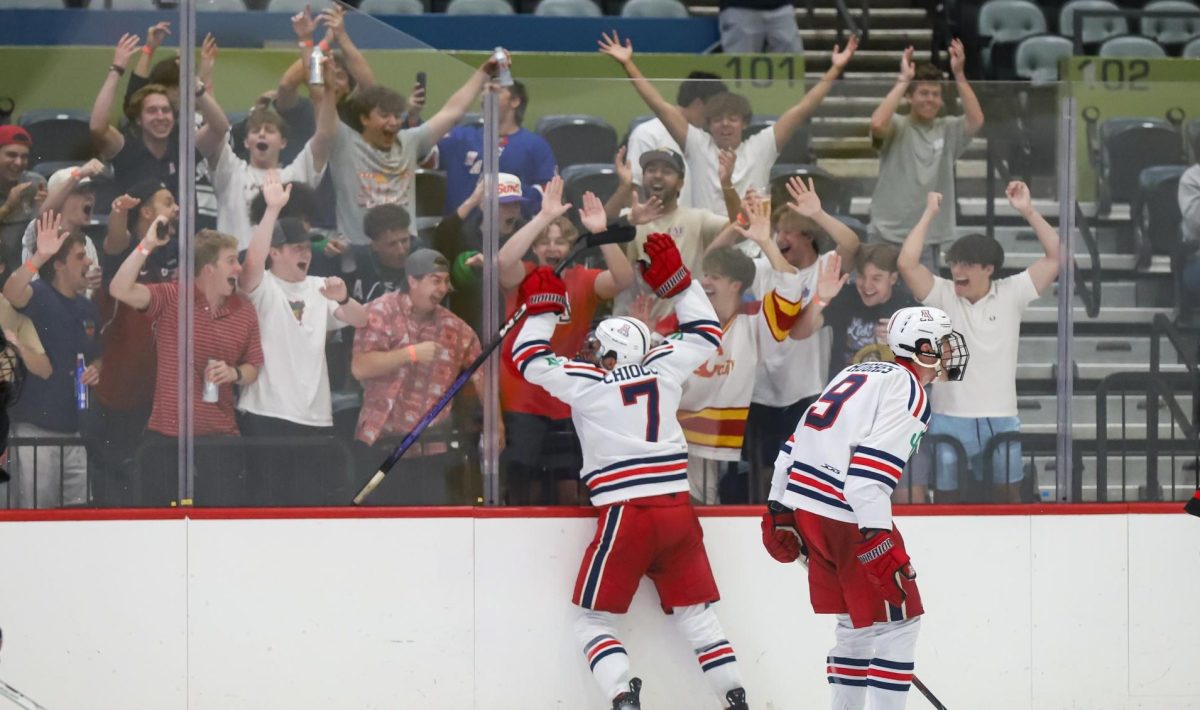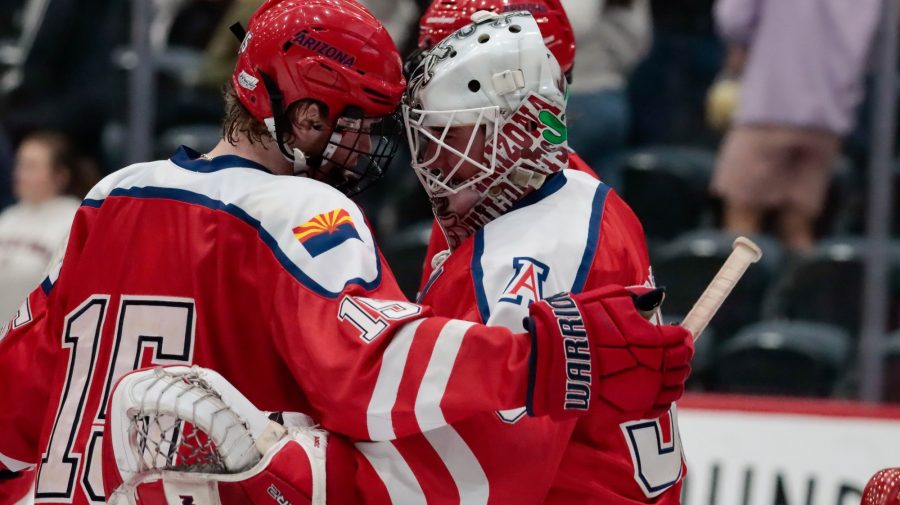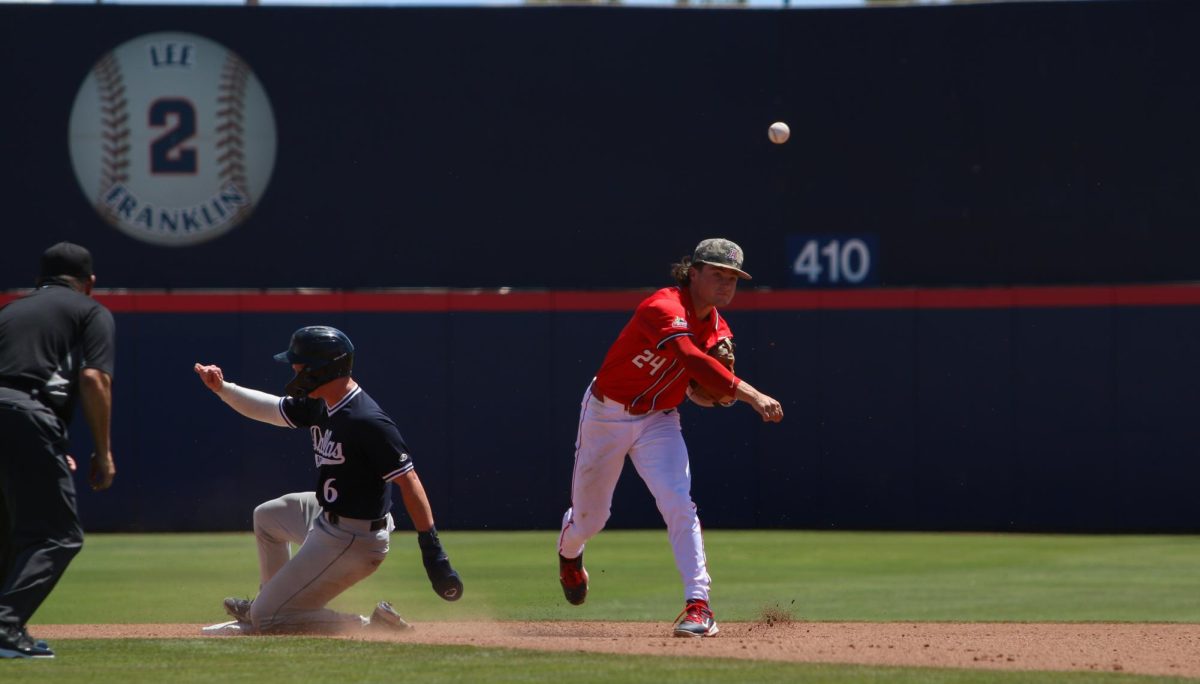From the very beginning, football found a home at Arizona.
“”We’re all just shadows passing through this game,”” Arizona co-defensive coordinator Greg Brown said. “”This game is going to be here. We’ll be long gone, and this game is going to be going strong at the University of Arizona.””
In 1899, players and their equipment certainly didn’t look like they do now. The men representing Arizona donned sage green and silver.
Players were given old leather shoes that a local shoemaker would attach cleats to, which were expected to provide enough traction to maneuver through poorly groomed fields. Padded canvas pants were expected to provide protection for players’ legs. Old shirts were stuffed into jerseys — really, just old cotton sweaters — bracing players for brutal impact. For head protection? Nothing.
Flash forward 125 years, and you’ll find a sport obsessed with protection, speed and improving performance.
“”They’ve definitely dressed up football a lot since then,”” said Adam Hall, a current sophomore safety. “”Not just fashion, but pads, and they’ve changed the game in the last recent years. They change the game as far as speed-wise, and they change the game finesse-wise.””
In a game that has become ingrained in American culture, every detail has become scrutinized. And it’s not just the players that are being watched and evaluated but also the cleats, jerseys and helmets that have become football garb.
“”Everything is more refined, more specialized,”” said Wendell Neal, associate athletics director for equipment operations. “”When the equipment started getting more protective is when the game started to get more important.””
Companies produce 12 to 15 kinds of shoes in one year’s line of cleats. Shoulder pads have changed from foam on the shoulder sewn into the jersey to equipment that now costs more than the players’ helmets. Facemasks were added to helmets, and since the 1970s, the facemasks have developed to protect players’ mouths and teeth.
The developments from 1899 to the present day are astounding. Helmets went from nonexistent to leather helmets, offering some sort of protection, although minimal, for players’ heads. But if the progression to leather helmets was a jump, the progression to fiberglass helmets was a leap.
“”The helmets are concussion-proof and have a cool facemask, visors, stuff they didn’t have,”” Hall said. “”Our cleats are so light, it feels like we don’t have shoes on. Our jerseys are so tight to us, people can’t grab us.””
The emphasis on the changing game to make it safer for players has changed the way the equipment has been developed. The game progression to increased violence is a reflection of the development of equipment.
“”People are stronger, faster, so the hits are more violent. The equipment can’t keep up with the body itself getting bigger, faster, stronger,”” Neal said. “”I’m sure the equipment hasn’t been able to keep up with that.””
The equipment has evolved due to the nature of the game. Because the equipment has changed the way in which the game in played — and the game has become more dangerous — there has been a development toward preventing serious injuries.
Keeping players healthy is a main focus of the obsession and analyzing of football equipment. With the amount of concussions, broken bones and injuries in general, the players have suffered, and the design of the protective gear has changed dramatically in the last 30 years.
“”Back in the day, you would deal with a broke nose, now we’re dealing with broke necks,”” Neal said. “”It’s changed a lot, but just in the last 10 years, there’s been a lot more technology geared toward concussions.””
Protection is what’s changed the game, and coaches and players agree that the developments have been for the best.
“”Well I’m all for it. It must have been unbelievably brutal back in the day,”” Brown said. “”College football is going to be going on and keep on going, and we’re just going to be passing through.””



